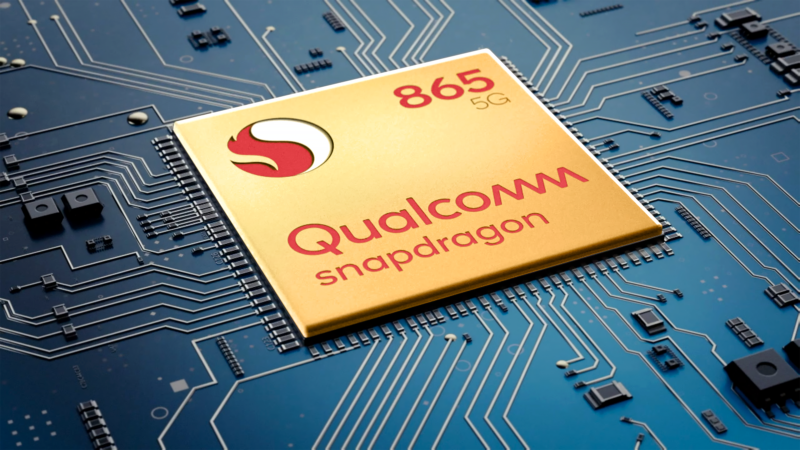
Qualcomm really threw a wrench into the flagship SoC market for 2020 with the Snapdragon 865. The new chip was a big departure from previous years thanks to Qualcomm's aggressive push for 5G, which comes with design requirements that make phones bigger, hotter, and more expensive than previous years. While we've already seen Samsung and many Chinese OEMs step up with 865-powered super-flagships that are more expensive than ever, for some OEMs, it seems like the cost is just too high. A pair of recent reports indicated that both Google and LG are skipping out on the Snapdragon 865 this year, opting instead for a cheaper chip.
For Google's next flagship smartphone, the Pixel 5, a few signs have popped up indicating it won't use the Snapdragon 865. Pixel phones always pop-up in the Android code repository with fishy codenames before release, and in January, XDA Developers spotted three devices codenamed "Sunfish," "Redfin," and "Bramble." A recent teardown of the Google camera app gave us definitions for each of these codenames. "Sunfish" was labeled as "photo_pixel_2020_midrange_config," aka the Pixel 4a, while Bramble and Redfin were labeled "photo_pixel_2020_config," which should be the Pixel 5 and Pixel 5 XL.As reported by XDA in January, the Pixel 5 and 5 XL don't actually use Qualcomm's flagship Snapdragon 865. In the Android code base, both are running the Snapdragon 765G, a chip that's one step down from the 865 in Qualcomm's lineup. There isn't actually a Snapdragon 865 Google phone in the Android repository.
Korean site Naver reports that LG is taking a similar approach to its 2020 flagship, the LG G9 ThinQ: instead of shipping the 865, the company is also opting for the cheaper 765G. HMD did the same thing recently with the launch of the Nokia 8.3.
The cost of smartphones is too damn high!
There haven't been many yet, but the Snapdragon 865 flagships we've seen so far have been more expensive than ever. The Samsung Galaxy S20 starts at $1,000 for the smallest version and tops out at $1,400 for the S20 Ultra. Last year, the Galaxy S10e started at $750, the S10 was $900, and the S10+ was $1,000. Sony's Xperia 1 II costs €1,199 ($1,287) in Europe, while the Sony Xperia 1 from 2019 was only €799 ($857).
There are several reasons for the higher price. First, the Snapdragon 865 has taken a step backward in terms of SoC integration from previous years. The SoC has no onboard modem—instead, it offloads the 4G and 5G connectivity to a separate chip called the X55 Modem. Qualcomm mandates that the 865 must be bundled with the X55 modem, making 5G a requirement for any Snapdragon 865 phone. The extra chip takes up more space in the phone, it costs more, and it needs a more complicated motherboard design. If OEMs want to deliver on the speed promises of 5G, they need mmWave, which requires several extra RF modules to be placed around the phone. mmWave functionality is optional, and for the relatively cheaper or smaller 5G phones, like the base model Galaxy S20, mmWave is left out.
It's not just the extra Snapdragon 865 hardware that is leading to higher phone costs. The space and power requirements push OEMs toward making phones even bigger than last year, which encourages bigger screens and bigger batteries. In many cases, you can't make an apples-to-apples comparison of the price of 5G, because everything else has gotten bigger, too. So the cost of the 865 isn't just the cost of the chip package itself—it's also the bigger, more power-hungry phones.Both Google and LG are reportedly opting for the Snapdragon 765G, a chip that is one step below the Snapdragon 865. Instead of being slightly worse in every way, the Snapdragon 765G actually one-ups the 865 in one area: it's Qualcomm's first SoC with an integrated 5G modem. Instead of the two-chip design of the 865, everything on the 765G comes in a neat, single-chip package. This design lets OEMs keep the simpler one-chip SoC solutions that were common in 4G phones in 2019, and in addition to directly being cheaper, this design should also help reduce costs with a smaller footprint and less power usage.
The 765G is a bit slower than the 865, but not dramatically so. The 865 is a 7nm, eight-core SoC with four A77 cores and four A55 cores. The 765G uses two older A76 cores and six A55 cores. For companies like Google, with heavy software optimization, you might not even notice.
If you've been looking for a phone upgrade this year and the outrageous prices of 2020 flagships have been putting you off, cheaper phones might be on the way later this year.
"expensive" - Google News
March 24, 2020 at 05:41AM
https://ift.tt/2wwQv5M
Reports: Google, LG, don’t want Qualcomm’s super-expensive Snapdragon 865 - Ars Technica
"expensive" - Google News
https://ift.tt/2GwwnlN
Shoes Man Tutorial
Pos News Update
Meme Update
Korean Entertainment News
Japan News Update
Bagikan Berita Ini















0 Response to "Reports: Google, LG, don’t want Qualcomm’s super-expensive Snapdragon 865 - Ars Technica"
Post a Comment